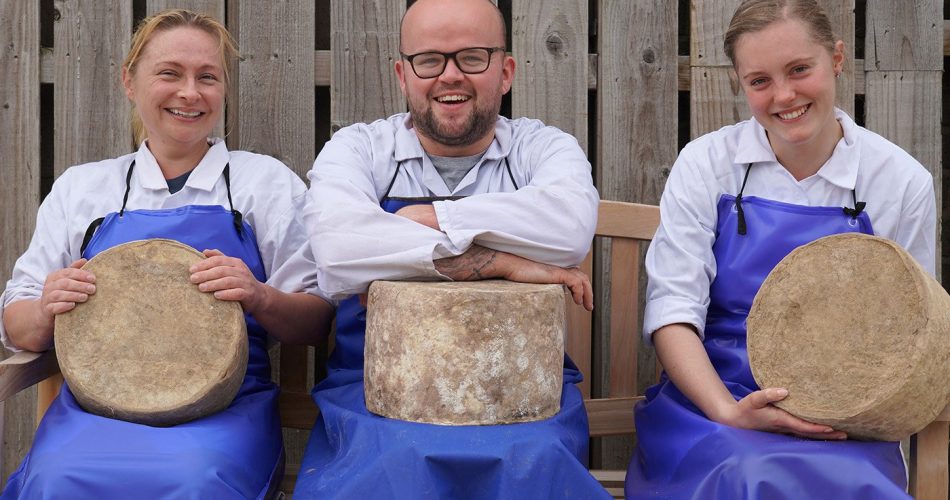From Thomastown to Your Table: The Excellence of Floridia Cheese Melbourne
From Thomastown to Your Table: The Excellence of Floridia Cheese Melbourne
Blog Article
Opening the Tricks of Artisanal Cheese Making: A Step-by-Step Do It Yourself Guide
In the world of cooking craftsmanship, artisanal cheese making stands as a testimony to the delicate equilibrium in between practice and technology. Each action in the procedure, from selecting the ideal milk to refining aging methods, holds within it a wide range of knowledge gave through generations. As we start this journey to debunk the art of developing charming cheeses, we are confronted with a tapestry of abilities and secrets waiting to be deciphered. Join us as we check out the intricacies of this old craft, where art, science, and persistence converge to produce tastes that entice the senses.
Picking the Right Milk
When embarking on the trip of artisanal cheese production, the option of milk plays an essential duty in identifying the high quality and characteristics of the last product. The type of milk selected affects the flavor, appearance, and generally profile of the cheese.
When selecting milk for cheese production, it is necessary to consider the fat content. Greater fat material in milk can result in a creamier and richer cheese, while reduced fat material might lead to a drier and firmer appearance. Additionally, the resource of the milk, whether from cows, goats, sheep, or buffalo, contributes distinctive flavors and qualities to the cheese (Melbourne Made Cheese). Each sort of milk brings its own subtleties, permitting a broad variety of cheese varieties to be crafted based on the picked milk. Eventually, the choice of milk is an essential decision that sets the foundation for a successful artisanal cheese-making undertaking.
Culturing and Coagulating
To initiate the cheese-making procedure, the important actions of culturing and coagulating need to be meticulously implemented to transform milk into curds and whey. The type of society made use of can substantially affect the flavor, texture, and ripening of the last cheese item.

The timing and temperature control throughout culturing and coagulation are crucial elements that influence the last end result of the cheese. Proper execution of these actions is necessary to guarantee the preferred appearance, taste, and consistency of the artisanal cheese being created.
Draining and Pushing Curds
After the milk proteins have coagulated and the curds have been cut to release whey, the following crucial action in artisanal cheese making includes draining pipes and pressing the curds to attain the preferred appearance and consistency of the final cheese item. The time for draining can vary depending on the kind of cheese being made and the wanted wetness content.
As soon as the curds have adequately drained, the following step is pressing. Pressing assists remove any kind of continuing to be whey and compacts the curds to develop a solid cheese wheel. Pressing can be done making use of specialized cheese presses that apply regular and mild pressure over an amount of time. The duration and stress used during pushing will certainly influence the final appearance of the cheese, from soft and creamy to tough and firm. Appropriate pressing and draining pipes are important steps that substantially influence the quality and qualities of the artisanal cheese being generated.
Aging and Flavor Methods
Executing meticulous aging and flavor techniques is pivotal in enhancing the deepness and intricacy of artisanal cheeses, raising their taste accounts to exquisite levels of improvement and sophistication. Aging plays a vital duty in establishing the special flavors and textures that distinguish artisanal cheeses.
Seasoning methods additionally contribute considerably to the last preference of artisanal cheeses. Cheesemakers have a peek at this site might pick to introduce extra tastes by incorporating components such as natural herbs, spices, or perhaps fruits into celebrity throughout the production process. Furthermore, some cheeses are cleaned or massaged with different fluids, such as salt water or alcohol, to enhance their tastes and structures.
Wrapping and Storing Cheeses

Verdict
Finally, grasping the art of artisanal cheese making includes thoroughly selecting the right milk, complying with accurate culturing and coagulating processes, draining pipes and pushing curds efficiently, and making use of various aging and flavor strategies. By adhering to these steps vigilantly image source and with attention to detail, you can produce your own delicious and one-of-a-kind cheeses in your home. Bear in mind to cover and keep your cheeses effectively to make sure ideal taste and appearance advancement. Happy cheese making!
Each kind of milk brings its own nuances, permitting for a large array of cheese selections to be crafted based on the picked milk.After the milk healthy proteins have actually coagulated and the curds have actually been cut to release whey, the next essential step in artisanal cheese making includes draining pipes and pressing the curds to accomplish the preferred texture and consistency of the last cheese product. Many cheeses should be wrapped in wax paper or cheese paper to allow them to take a breath while protecting them from drying out. For cheeses that require to continue aging, such as bloomy peels or washed peels, guarantee they are kept in an awesome setting straight from the source like a cheese cavern or a refrigerator set to the appropriate temperature. By paying focus to the covering and storage space of artisanal cheeses, cheese manufacturers and lovers can maintain the honesty of these specials and fully enjoy their complicated flavors.
Report this page